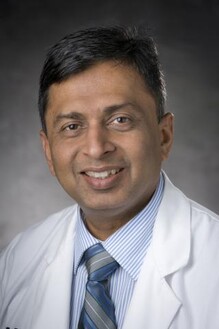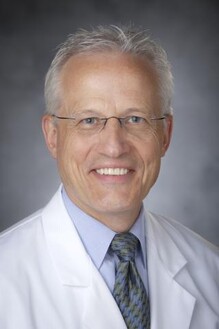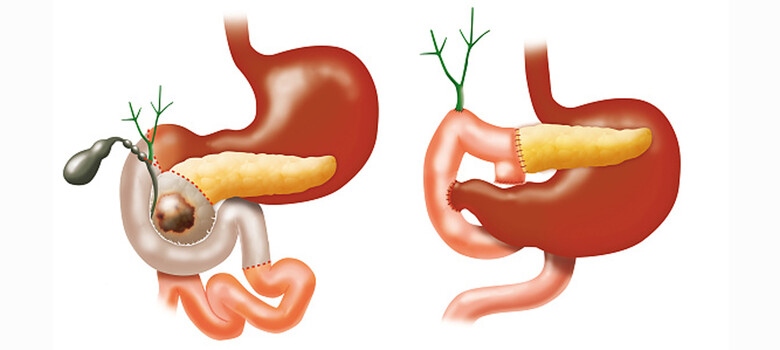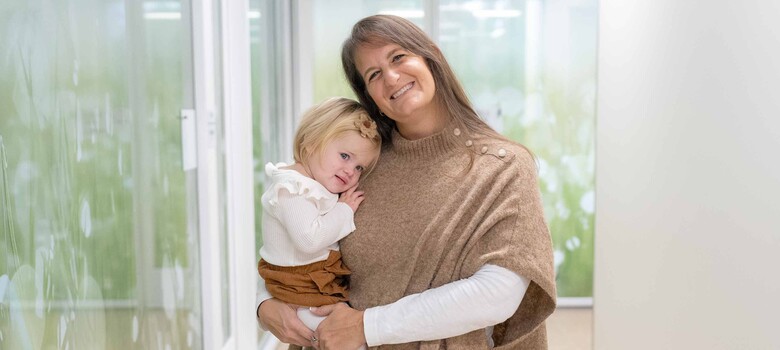Pancreatic Cancer Survivor Back to Doing What He Enjoys

David Sabio stands in his garden in Garner, NC.
David Sabio was 48 when he was diagnosed with pancreatic cancer. After aggressive treatment at Duke Health including surgery, chemotherapy, and radiation, he shows no evidence of disease three years later.
A Long Road to Pancreatic Cancer Diagnosis
David Sabio of Garner suffered from bouts of abdominal pain for more than a decade. Routine tests came back fine, and he was otherwise young and healthy, so he and his doctors didn’t think much about it. Then on Christmas 2020, the pain intensified. His doctors performed an upper endoscopy, during which a flexible tube was passed through the mouth to view the upper section of the gastrointestinal area. It showed nothing wrong. When the pain persisted, Sabio underwent MRI and CT scans, which showed a spot on his pancreas. A follow-up endoscopic ultrasound with biopsy confirmed pancreatic cancer. That’s when Sabio was referred to Duke.
Pancreatic Surgery Patients Do Better at High-Volume Centers
Sabio and his wife met with the Duke oncology team, which included surgical oncologist Kevin Shah, MD. “Dr. Shah is an amazing man,” said Sabio. “He went through all the scenarios, and answered all our questions. He had an approach that was like ‘You’re young and healthy. I’ve seen the imaging. I think we can go in now and get this. Let’s do it while you’re strong.’”
Sabio underwent a laparoscopic distal pancreatectomy and splenectomy. During the minimally invasive procedure, small incisions were made through which the left part of his pancreas and his spleen were removed. “In general, pancreatic surgery patients do better at high-volume centers,” said Dr. Shah, meaning cancer centers that do a lot of pancreatic cancer removal procedures. “That’s usually defined as 10 to 20 per year. At Duke, we perform over 200 per year.”
Hear from David Sabio about his pancreatic cancer journey.
Aggressive Pancreatic Cancer Treatment
Following surgery, Sabio underwent 12 rounds of chemotherapy that his medical oncologist, Duke’s Neeraj Agrawal, MD, called “very, very aggressive.” “But he rocked it all the way. We didn’t have to take breaks; he just marched right through,” said Dr. Agrawal.
Next came radiation, under the guidance of Duke radiation oncologist John W. Nelson, MD. Even after having undergone chemotherapy, Sabio was nervous about radiation, but, he said, “the radiation team and nurses were great. Always very pleasant, made me comfortable.”
Sabio finished treatment in November, 2021, and the pathology report came back showing no signs of cancer. “Man, it was amazing,” Sabio said. “Oh wow.”
Three Years Later, No Evidence of Disease
“When most of these pancreatic cancers recur, it’s in the first one or two years,” said Dr. Agrawal. “Now that we are a little over three years from surgery, it's just amazing. We are following him closely every few months with scans and blood markers. And God willing, we are on our way to a cure.”
Today, Sabio is working to preserve his health and getting back to his life as an artist, medical illustrator, and avid gardener. “I couldn't be any more pleased and impressed with Duke Health,” he said. “I always felt like a priority. It was always like, ‘Don't let this guy leave until he is okay today.’”





